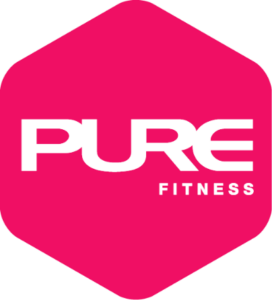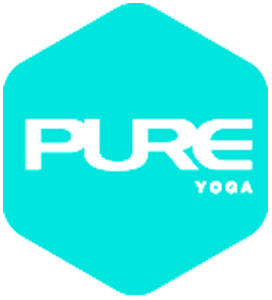Reading Time: 8~10 minutes
15 March 2024

The bodyweight squat is the beginning of every squat journey. It’s the base, serving as the canvas for all squat variations. It engages multiple muscle groups, such as quadriceps, hamstrings, glutes, and core muscles.
Stand shoulder-width apart, toes slightly pointed out, and extend your arms forward for balance. Lower your body as far as you can by pushing your hips back and bending your knees. Pause, then slowly push yourself back to the starting position.
This is your gateway to understanding the correct movement pattern and is a low-risk option for those worried about overexertion or injury.

The Sumo Squat is a powerful variation that not only targets the same muscles as the traditional squat but also pays special attention to the inner thighs and glutes.
Start by standing with feet wider than shoulder-width apart, toes pointing outward at a 45-degree angle. Engage your core, lift your chest, and keep your back straight. Bend your knees, ensuring they align with your toes until thighs are parallel to the floor. Hips should move back and down. Hold briefly, then push through heels, engaging inner thighs and glutes to return to start.
The Sumo Squat is a powerful exercise that enhances flexibility, balance, and body connection. It helps you to challenge and strengthen muscles, improving stability, strength, and mobility for daily activities and sports to prevent injuries.

Before performing this variation, ensure you introduce an external load, typically a kettlebell or dumbbell, held against your chest. This setup subtly changes the movement mechanics, enhancing its impact.
By holding a weight close to your chest with both hands, stand upright. Perform a squat by bending your knees and lowering your hips. Push through your heels to return to the starting position. This exercise targets your core muscles effectively.
Adding weight enhances core engagement and stability, deepening the squat for better flexibility, especially in the hips. It increases metabolic burn by engaging more muscles, making it inclusive for all fitness levels.

The Split Squat, sometimes called the Static Lunge, shifts your weight entirely to one leg, providing a unilateral challenge that helps correct imbalances and enhances stabilisation. This movement primarily engages the quadriceps, hamstrings, and glutes.
Balancing on one foot, extend your other leg back onto a stable elevated surface. You can hold a weight in one hand for an added challenge. Lower your body until your front thigh is parallel to the ground, engaging your quads and glutes in a stabilising split squat workout.
By focusing on one leg at a time, the split squat allows for a deeper level of awareness, muscle isolation and balance in each for even strength distribution across both lower limbs.


A fresh approach to a wellness studio that helps you unscramble your head and Re:set your system mentally, physically and emotionally – powering you up to feel your best again.

Whether you want to tone your body or pump up your cardio, harness the power and grit with PURE Fitness.

From private yoga to specialised classes, enjoy the ultimate yoga experience with PURE Yoga and lead happier, healthier, and more balanced lives.
From yoga to fitness, PURE Online provides scheduled and on-demand workout videos to practise anytime and anywhere.
noodfood offers only the good stuff — delicious and nutritious food and drinks including cold-pressed juices, raw foods and organic snacks to keep you happy and healthy.

A fresh approach to a wellness studio that helps you unscramble your head and Re:set your system mentally, physically and emotionally – powering you up to feel your best again.

Whether you want to tone your body or pump up your cardio, harness the power and grit with PURE Fitness.

From private yoga to specialised classes, enjoy the ultimate yoga experience with PURE Yoga and lead happier, healthier, and more balanced lives.
From yoga to fitness, PURE Online provides scheduled and on-demand workout videos to practise anytime and anywhere.
noodfood offers only the good stuff — delicious and nutritious food and drinks including cold-pressed juices, raw foods and organic snacks to keep you happy and healthy.
A fresh approach to a wellness studio that helps you unscramble your head and Re:set your system mentally, physically and emotionally – powering you up to feel your best again.
Whether you want to tone your body or pump up your cardio, harness the power and grit with PURE Fitness.
From private yoga to specialised classes, enjoy the ultimate yoga experience with PURE Yoga and lead happier, healthier, and more balanced lives.
From yoga to fitness, PURE Online provides scheduled and on-demand workout videos to practise anytime and anywhere.
noodfood offers only the good stuff — delicious and nutritious food and drinks including cold-pressed juices, raw foods and organic snacks to keep you happy and healthy.
A fresh approach to a wellness studio that helps you unscramble your head and Re:set your system mentally, physically and emotionally – powering you up to feel your best again.
Whether you want to tone your body or pump up your cardio, harness the power and grit with PURE Fitness.
From private yoga to specialised classes, enjoy the ultimate yoga experience with PURE Yoga and lead happier, healthier, and more balanced lives.
From yoga to fitness, PURE Online provides scheduled and on-demand workout videos to practise anytime and anywhere.
noodfood offers only the good stuff — delicious and nutritious food and drinks including cold-pressed juices, raw foods and organic snacks to keep you happy and healthy.
Let us know how we can help you.
Form submitted. Our representative will contact you shortly.
Form submitted. We will Our representative will contact you shortly.
Let us know how we can help you.
Form submitted. Our representative will contact you shortly.